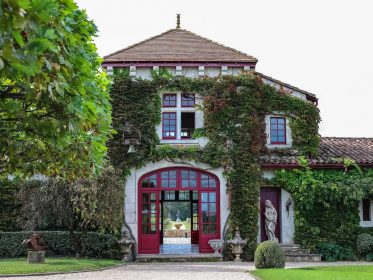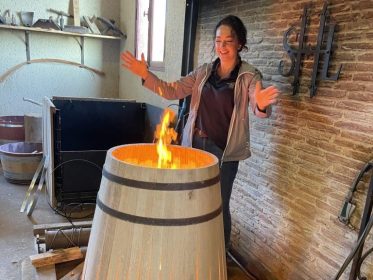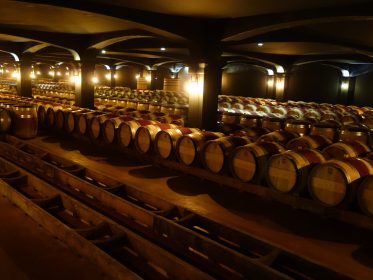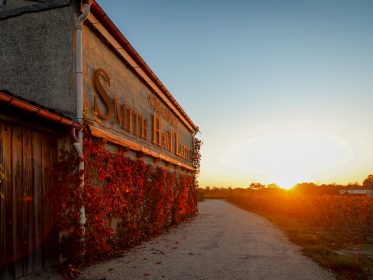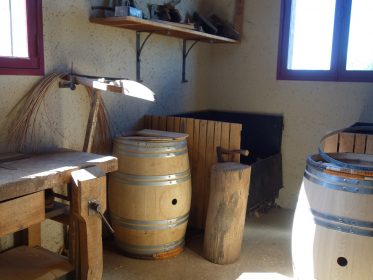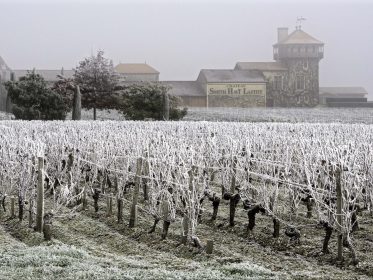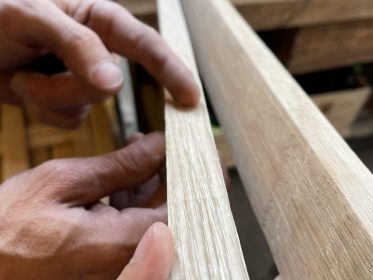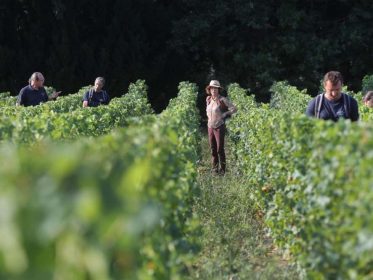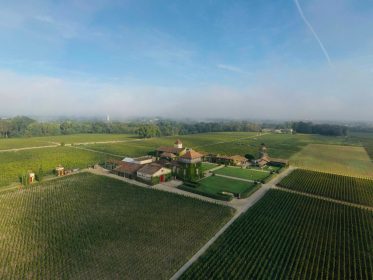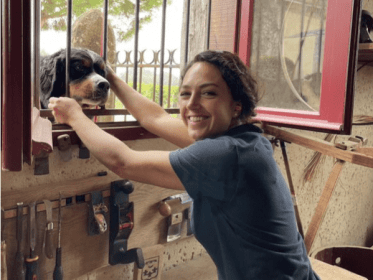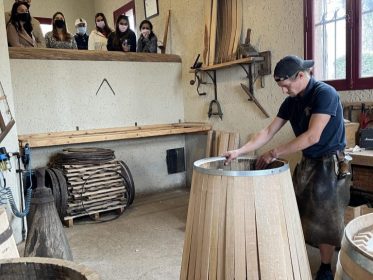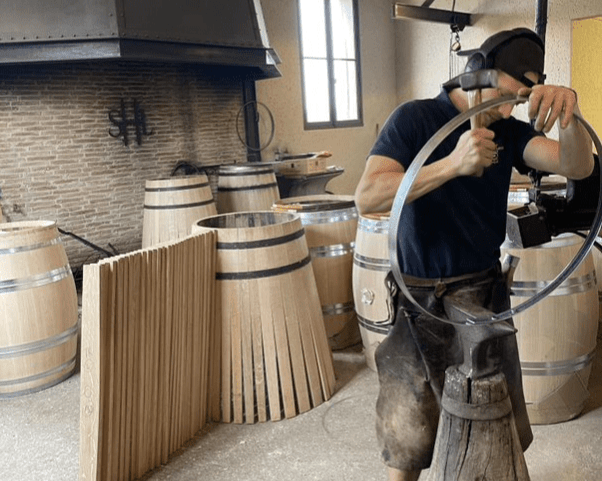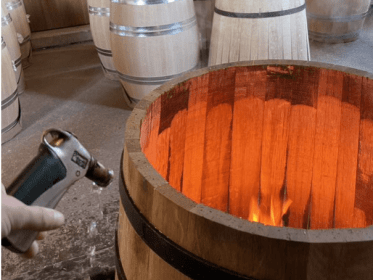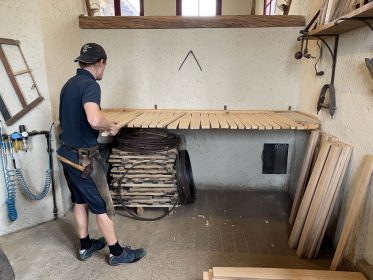Barrel making perfection at Chateau Smith Haut Lafitte
Chateau Smith Haut Lafitte, a Wine Travel Awards nominee, lies just south of the city of Bordeaux in the Pessac-Leognan wine region. It is nestled amidst a sea of green woodlands, blooming wildflowers, and vines. To reach the chateau, you’ll have to brave your way down French country roads that far seem too narrow by American standards. The landscape is so verdant and vibrant you will think it’s impossible that you left metropolitan Bordeaux less than half an hour ago.
A 14th-century tower, built during the Renaissance, rises up from the sprawling vineyards, marking the heritage and legacy of the Smith Haut Lafitte estate. It looks as if it was carefully lifted from the hills of ancient Scotland and gently teleported to Martillac.
There is another, smaller tower, nestled toward the rear of the Chateau. It’s unprepossessing. Just one more beautiful piece of the stunning property. But it holds one of the most prized elements of winemaking at Chateau Smith Haut Lafitte. It is a crucial piece of their winemaking prestige. It has no tanks or presses. It never holds any grapes. It’s filled with the warm smell of wood and smoke. The air rings with the ping, ping, ping of hammers hitting chisels. This is the Chateau’s in-house tonnelerie.
It is extremely rare for a chateau to have its own tonnelerie in the modern era. Making your own barrels requires tools and expertise that few chateaux want to invest in. And to do it properly, by hand, is an act of human strength bordering on superpower.
There’s perfection, and then there’s perfection. When asked in a job interview: “What’s your greatest flaw?” One person might say they’re just too much of a perfectionist. But you know they’re not talking about real perfection. The type of perfection that irons its socks. The type of perfection that cleans the sink drain with a paintbrush. The perfection that vacuums its carpets in straight, even rows to get the perfect vacuum “stripes.” This is the level of perfection in practice at Chateau Smith Haut Lafitte’s tonnelerie.
The resident tonnelier, Yann, is as unprepossessing as the tonnelerie tower. From a distance, he looks like someone who could have a desk job. But up close, you begin to see his sinewy physical strength. Take a look at his arms, and you’ll notice something the size and shape of a golf ball directly underneath his right elbow. It’s not a tumor. It’s a muscle.
Barrels can be toasted light, medium, or heavy, and any degree in between. The wood can come from specific forests, but even more particular than that, it can come from specific plots in specific forests. The combination of a certain level of toast with the wood from a certain plot can create dramatically different results.
When Yann first came to the Chateau, he spent months with the Cathiard family, the Technical Director, and the Cellar Master, selecting the perfect wood from the perfect forests. They tested every possible level of toast. They filled these test barrels with wines from different grape varieties and different vineyard parcels. After months in the barrel, they conducted tasting panels together.
After tasting hundreds of samples, the team concluded that there was not one “correct” barrel. Instead, there was a correct blend of barrels, just like there was a correct blend of grapes. So, they created a recipe. The wood from this parcel gets toasted to this level, and this different parcel gets toasted to this different level, and for each three of the first barrels we use, we’ll make two of the second barrels. And we’ll also add one of a third, different barrel from a different plot at a different level of toast.
Following these recipes, the tonnelier makes up to two barrels per day. They’re stacked up in the tonnelerie in all different stages of completion. Some are newly assembled, the form bound together at the top with thick black metal rings, the bottom flaring out like a trumpet. Others look completely finished to the novice eye, but they have hours of shaving, sanding, and polishing yet to undergo.
You don’t make one barrel from start to finish all in one day. That’s too inefficient. So, while the barrel you assembled yesterday is toasting, you might be inspecting the pieces for a new barrel, or putting the end boards on a second, or finely shaving a third.
But, if you were to go in order, it would progress something like this: first, the oak arrives in pre-shaped pieces of varying widths, stacked on a pallet two meters high. Each pallet is identified by its plot. Just as a good wine is made by rigorously selecting the grapes, a good barrel requires precise selection of its wooden pieces. The tonnelier individually examines each board. He peers across the front and down each side to classify strength and quality. When a tree is growing, the wood grain is where the liquid from the roots gets transported to the branches. So, if a wood piece has a grain that runs from what will be the inside of the barrel toward what will be the outside of the barrel, wine could run through it just like water. Chateau Smith Haut Lafitte does not make leaky barrels.
After examining the boards piece by piece, the tonnelier begins to lay out the barrel on a large, flat table. He alternates between wide and narrow. The pieces with perfect wood grain go towards the bottom. Some of the pieces that seemed riskier can still be used. They are placed towards the top, where the liquid pressure is less. The widest piece in the center of the table is where the bung hole will be.
The barrel is then assembled and toasted over the course of a dozen more distinct stages. Each step is detailed and physically exhausting. The tonnelier then takes things one step further. He sands the entire exterior of the barrel to new-wood perfection. The top ring of the barrel is first shaved with a curved hand chisel, then rough sanded by hand, then finely sanded by hand, then smoothed by hand, until it feels more like glass than wood. The tonnelier explained that even though these outer surfaces will never come into contact with the wine, they are an essential part of quality. “If a barrel is perfect on the outside, that’s how you know it’s also perfect on the inside.”
For all the work that goes into creating an exceptional wine, it is strange to consider that in-house tonneleries are so rare in Bordeaux. The wine will spend most of its time in a barrel before being bottled. But the barrel is even more than a storage vessel. It imparts ellagitannins, whisky ketones, and other essential elements in the structure and elegance of fine wines. A superior wine deserves a perfect barrel.
Author: Patricia Wilcox.
